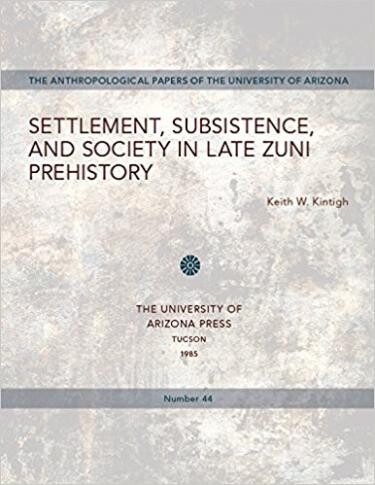Settlement, Subsistence, and Society in Late Zuni Prehistory
Beginning about A.D. 1250, the Zuni area of New Mexico witnessed a massive population aggregation in which the inhabitants of hundreds of widely dispersed villages relocated to a small number of large, architecturally planned pueblos. Over the next century, 27 of these pueblos were constructed, occupied briefly, and then abandoned. Another dramatic settlement shift occurred about A.D. 1400, when the locus of population moved west to the “Cities of Cibola” discovered by Coronado in 1540.
Keith W. Kintigh demonstrates how changing agricultural strategies and developing mechanisms of social integration contributed to these population shifts. In particular, he argues that occupants of the earliest large pueblos relied on runoff agriculture, but that gradually spring- and river-fed irrigation systems were adopted. Resultant strengthening of the mechanisms of social integration allowed the increased occupational stability of the protohistorical Zuni towns.
Bio
Keith Kintigh is a professor in the School of Human Evolution and Social Change and the co-director of its Center for Archaeology and Society. His field research focuses on the political and social organization of ancestral Pueblo societies in the Cíbola (Zuni) area of west-central New Mexico.


